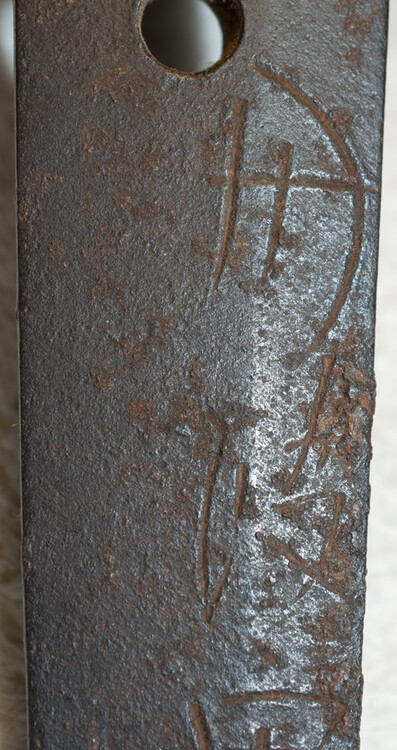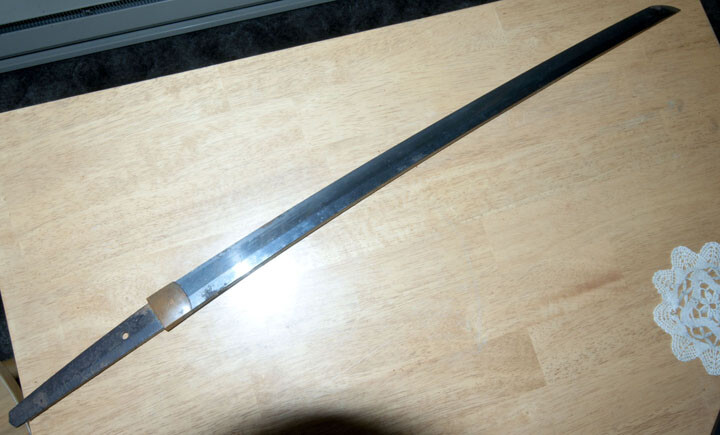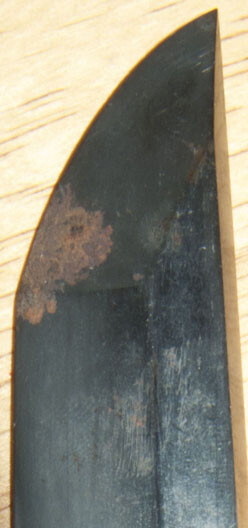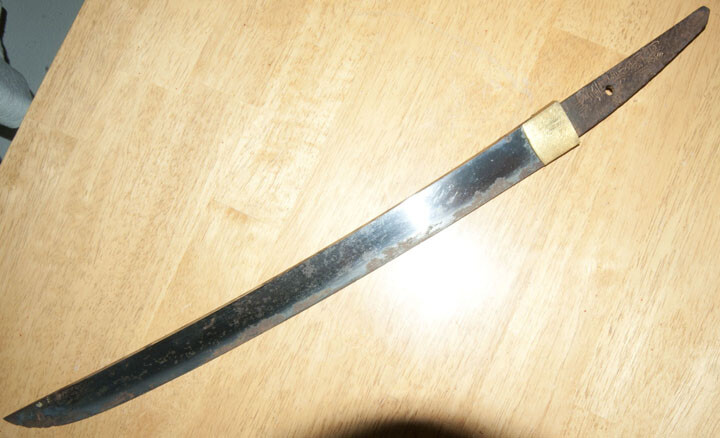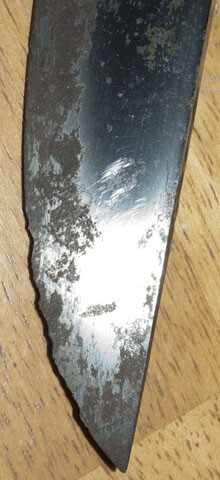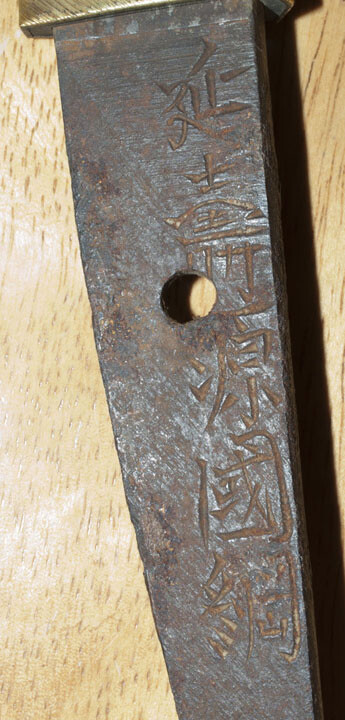
Sabotage
Members-
Posts
15 -
Joined
-
Last visited
Content Type
Profiles
Forums
Events
Store
Downloads
Gallery
Everything posted by Sabotage
-
By the way, the reason you got no response when you wrote to Forbes is because you didn't address your concerns to the right person. You're not looking for the editor, you want the advertising director. You may also want to mention the following phrases: scam, false advertising and liability. I have worked for newspapers and magazines for 13 years now, and trust me, they can be held liable for false advertising if some dumb schmuck buys this without getting it authenticated first, based on what they read in Forbes. Likely this advertorial came camera-ready and all they had to do was slap it on the page, so they (the publishers) didn't pay any attention to what it said, other than to spell check it. Also, in case anyone feels the need to buy objects from magazines based on "articles," here are a few things to consider. Paid advertisements that resemble news articles should say either "Paid Advertisement" or "Advertorial" which is really just a fancy way of saying "we're trying really hard to make this look legit, but buyer beware." Also, one look at that font and point size screams "we want you to see this and we needed to fill the space! This isn't a real article!" Typically, reputable publications have a style guide they adhere to pretty strictly that puts "editorial" fonts in one category and "advertorial" fonts in another, so it's always easy to spot. Also, I wonder if it ever occurred to the owners that people don't advertise Ming dynasty vases or the Koh-i-Noor for sale in Forbes. But this post is actually useful in that it does raise the issue of just how reliable a photo appraisal is and the need to get someone to look at something in person if you're going to slap an outrageous price on it. And of course, who you're having do the appraisal and what their qualifications for your particular object are. I wouldn't get a jeweler to appraise my furniture.
-
Depending on your photography skills, equipment (or ingenuity to compensate for the lack thereof) and obsessive-compulsive attention to detail, here are a few suggestions, some of which may have been mentioned before. Use a neutral, non-reflective backdrop, preferably in a dark color. If you've got it, black velvet is great for this Convert your photograph to grayscale and consider upping the contrast. Do not use the nifty sharpen tool or unsharp mask. If you take your time and focus properly, there will be no need to mess with this anyway. Consider your lighting and remember to change the white balance/exposure on your camera to accommodate. Even if you convert to grayscale, the white balance will make a difference. Use non-direct, diffuse lighting whenever possible. It may be helpful to cover your light source (or flash, if you're going that route) with some translucent fabric as a diffuser. Shooting through the side of an empty milk carton, even the opaque white ones, can work wonders. You want to see the details, not the flash. If you're taking a photo of the entire blade and you want it all in focus, in great detail, this is possible, it will just take some doing. Experience the joy of focus stacking. You're going to need a way to ensure the blade does not move through this process, your lighting really, really needs to be uniform and diffuse and you need to rig up a way for your camera to be positioned at various points along the length of the blade while remaining at a consistent distance and orientation from the blade. You can rig up two "rails" out of dowels or 2"x2" or even evenly stacked books. They need to run one on each side down the length of the blade, and you'll set your camera (facing down, obviously) on these and just move it down the length of the blade, taking photos every so often. The closer your camera is to the blade, the more photos you'll have to take, but the more detail you'll get (and the more work you'll have to do for it). Macro settings can be very useful here. If you can, manually focus your camera for the initial photo, then don't touch it; autofocus always manages to find some other random thing to focus on. If you've ever taken a panorama, this is a similar concept. you'll want a little overlap from one photo to another to help you align in the next step and prevent you from accidentally having a gap in your blade picture. If your lighting is not overall, you can also move it along with the camera, just make sure it stays in the same orientation as in the very first photo. Attaching it to your rails or camera can help with this. Take the photos into your chosen image editing program or give them to a willing friend and knit them together. If you've got Photoshop, you can use photomerge (File>Automate>Photomerge) and you should get pretty decent results (make sure you use the "Interactive Layout" button so you can manually position things if you don't like how the program does it. You may want to pay attention to the file names on each photo so you can be sure everything is in the correct order. If you decide not to use photomerge, or have another program, you can align the images manually, it just may take some tinkering. The zoom in features are your friend in this case. Focus stacking can be as detailed or simple as you'd like, with two or three photos or dozens. The more photos, the more detail, generally speaking. Even if things look in focus, lenses have a "sweet spot" typically in the center, where focus is clearest. This will result in larger file sizes, but it should do away with blown out areas and ensure that you have the most detail possible. I'll try to post a few example photos in the next week or so. Hope this helps.
-
First, congratulations on what looks like a total turn-around for your blade. Have to admit, I've been watching this thread closely for a while as I'm considering something similar for one of my swords, which appears in only slightly better condition than your original pics. I can't wait to see pictures of it when it's totally finished to your satisfaction. As someone who happens to have inherited two swords and is fairly new to the world of sword collecting in general I did my share of research, and have to sit on the fence in the "amateur American" vs. "trained Japanese" polish. Yes, I believe it is possible to get an acceptable job done in the states for a reasonable price; let's face it, if they were abominable, they'd quickly be out of customers. I would love to send both of my blades to Japan to be handled by a true artist, but I can barely afford to get one done in any country. Of course, then you run into the trust/language barrier. Someone said they like to get to know the person who will be handling their blade. I'd love to get to know them that way myself, however, I don't speak or read Japanese at all, nor can I afford to go to Japan. I may not be able to fly to New York or some other state either, but at least I can communicate clearly (and hopefully quickly) with an English-speaking polisher. But then there's the other side of the coin. If it's worth getting polished, it's worth doing it right. A whole lot of time, effort and artistry went into creating the blade in the first place. Most of the swords discussed on these boards have been around for several centuries and lovingly cared for. Or at least adequately cared for. And a whole lot of time and effort and artistry will go into preserving them and bringing out their true beauty. As someone else pointed out, these swords can not be replaced. The concept of "original knowledge" cropped up in a previous post and I couldn't help but laugh at that idea; it inspired some pretty entertaining words in my mind, but I'll try to lay it out in a civil manner. No one taught Wilbur and Orville Wright to fly, true. However, they would not have survived their first dog-fight or made the Thunderbirds. Yes, there is a valid argument for original knowledge, but I want a Rembrandt, not a finger-painting when it comes to my sword and the amount of money and time I'm going to shell out for it. Then there's the matter of elitism. Of course this is an elitist hobby. You're taking a very specialized hobby (that of sword collecting) and narrowing the field even more by specifying Japanese swords and arms, then still further narrowing it by basically ignoring most WWII era and later blades. Now there's nothing wrong with that, but it does pretty much fit the definition of elite; the best. The problem is there are quite a few of us "accidental elitists" who had a blade just fall in their lap. Anyone – no matter if they're the curator of an arms museum or Joe Blow down the street who bought his blade at a flea market and uses it to clear the cane fields – anyone who takes the time to come to these message boards and learn as much as they can should get a pat on the back. Learning has to start somewhere, and writing off the people on these boards who have a true passion for Nihonto and have taken the time and effort to become truly knowledgeable about this subject because you think they're "elitist" is just plain silly.
-
Thanks for the replies. The sword itself is actually from the late 1600s, but I'm guessing the last time it was polished was WWII; grandpa brought it back from Iwo Jima and I know for a fact he never had it polished. Just one of those idle curiosity things on my part.
-
Thanks. At least with a name other than "barcode" I can hopefully find some info
-
Not sure what the proper name is for the barcode-like marks a polisher leaves under the habiki, but I was wondering if there's any references out there to "read" them. Someone polished one of my blades, likely during/pre-WWII and I'm just sort of curious about it. If there's a post on here about it, could someone point me in the right direction? I've looked but I could just be missing it. Thanks!
-
Magnafluxing,non destructive testing of blades
Sabotage replied to Jim P's topic in General Nihonto Related Discussion
This would be effective in detecting any underlying flaws in a blade, and there's no need to go buy a magnaflux machine. Just take it to a metal shop that rebuilds engines. I just had my 440 block magnafluxed prior to boring and rebuild and it ran about $150. You might find someone willing to do it for less, simply because it's a lot simpler object than an engine block, and you might find someone curious enough to do it for free. Just ask to be there when they do it, or get a printout of the flux lines so you've got something to analyze. This is just a hunch, but I would guess the force lines should generally be in one direction; anything perpendicular would be bad. Let me know if you do it, I'm curious how it would turn out. Forgot to add that a decent shop will demagnetize the object if you ask and they typically clean it up for you as well. Any good shop will have everything they need to hand you your hunk of metal (engine, sword, whatever) back in at least the condition you gave it to them. You may actually loose some rust in the process, so if you're concerned about your tang, this is something to consider. -
It's amazing what you can can get with a macro lens when someone else is willing to hold the light; my lens blocks the flash half the time at that distance. I admit, I've been itching to get it polished, but if I'm going to do it, I'm going to do it right, and right now, that's a little out of my price range. It looks like it's got a nice sudare-ba, but it's so out of polish you've got to turn it this way and that to really see it. So for now I'm using it as my learning sword to get into the swing of things. I know there are certain characteristics of the blade itself that help identify it, as well as the mei, but if you've got a case like this, where there's many with the same signature from the same school (i.e. displaying similar characteristics), is there anything in particular that you personally look for to narrow the field? Or is it something that truly requires an in-hand, expert opinion? I'm asking from a general learning standpoint, rather than the specifics of this particular blade, since I know it needs polished for it to be really looked at. Or am I going at this in the wrong way, and just being a little anal retentive about knowing the exact person who made it and as close to the correct year as possible? And thank you all so much for your help, and taking the time to answer newbie/potentially stupid questions. I swear I've looked at my glossary a dozen times just from these posts, trying to get the terms to stick in my head.
-
Sword for "left handed Samurai"
Sabotage replied to stephan_hiller's topic in Auctions and Online Sales or Sellers
In Europe anyway, swordsmen were encouraged to be right-handed because of consistent castle design when it comes to staircases (and you never know when you'll get to storm the castle). If you stand at the bottom of the stair and look up, most spiral and square-blocked staircases turned clockwise. This means that the defender at the top of the stairs could swing their sword freely, while the attacker, coming up from below, would have the wall interfering with their swing. Only castle I can think of that has a counter-clockwise stair for left-handed defenders is Ferniehirst Castle in Scotland, the seat of Clan Kerr. While I don't know a whole lot about staircases in Japanese architecture, I can imagine having a lefty next to a righty in the line during a charge could result in some issues. Being a lefty myself, I can't even begin to number the times I've bumped elbows with a righty when in close proximity. Also, if you're training a large group of people, it's a lot easier to point out errors and get everyone looking smart when they're all using the same hand. That being said, theoretically a left-handed swordsman would be at an advantage to a right-handed one in single combat, simply because it is far more likely the lefty has fought a lot of righty's and knows how to respond than it is that the righty has fought a lot of leftys. Of course, you could really mess with your opponent and be ambidextrous, which would make the most sense in someone who was doing more than dueling for honor; you never know when your sword arm is going to get disabled. -
Thanks for the advice; this sword spent quite a bit of time in a soggy basement, so I'm frankly surprised it doesn't look worse. And thanks everyone for the help with this. I figured it would be hard to narrow down just who it was that signed it. Time to buy some books I guess.
-
Sorry, here's some better pictures of the mei. The rust isn't really loose rust, it's more pitting than anything, so I'm afraid to try and remove it without causing more damage. Anything in particular that makes you think it could be a fake, or is that just a possibility? I'm no new to this that I've got no idea. Either way, I love it, and yes, someday I'd like to get it polished up and take it to a shinsa, if it's not fake. Oh, and Sabotage was my nickname (among others) while I was in the Army. I'll change my user name; just didn't think it mattered much since I signed it with my name
-
Not sure if this is quite the right place for this, but here goes. I know this mei reads Tamba no Kami Yoshimichi, but I also know there was something like 12 generations that signed blades like this, and two major locations, Osaka and Kyoto. Based on the style of the "kami" kanji it looks like Kyoto to me, but it has no kiku mon, and from what I gather, that was used on Kyoto blades. So here's the question: how do you narrow down the when, where and who when presented with something like this? Most information I've found so far on this smith/family doesn't go into detail on which Tamba no Kami Yoshimichi they're referring to. Thanks!
-
Step in the right direction, thanks!
-
Anyone have any information on Minamoto Kunitsuna? I inherited this sword (and another with a different smith) and was told that's what the mei translated as, but I've not been able to find anything about him. Only other mention of someone with that name was Sagami no kami Minamoto Kunitsuna in a sword smith listing; no photos or pictures of signatures, so I can't compare. Any ideas on who/when/where this blade might be from? Someday (when I'm rich and famous) I'd like to get it restored, but for now I'll settle for learning about it. I know, it's not in the greatest condition, sorry.
-
Hello, my name's Melissa, and I'm a newbie, both to this board and to nihonto. I grew up with a passion for history and tales; I was the kid who sought out English translations of The Song of Roland, Gilgamesh and the Tale of Genji. When I was little I had to make "wish lists" for Christmas and my birthday, and without fail, every one had a request for a sword on it; for some reason, my parents didn't get me one Anywho, I joined the Army and while I was deployed my grandpa died. As the only person to enlist and ever express any interest in history, military or otherwise, my grandpa left me his memorabilia from his time in the Marines during WWII. Among other things, this included two nihonto he likely picked up in Iwo Jima. So I've been enthusiastically learning all I can about them and had a very helpful person help me decipher the mei, and point me here. I'm pleased to get to know you all, and thank you for sharing your knowledge!

